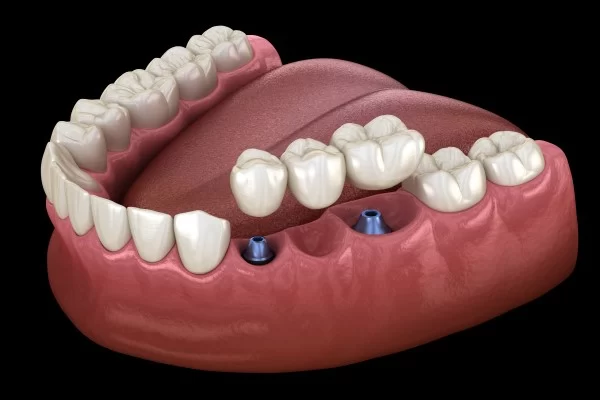
Benefits of Dental Implants Over Traditional Bridges
- Why Dental Implants Are Better Than Traditional Bridges
- The Long-Term Benefits of Dental Implants
- Comfort and Convenience: Why Implants Win
- Cost and Durability: Dental Implants vs Bridges
Why Dental Implants Are Better Than Traditional Bridges
When I first started looking into dental options for replacing a missing tooth, I was faced with a common dilemma: Should I go with a traditional bridge or opt for a more modern solution like dental implants? After doing extensive research and talking to my dentist, I quickly realized that dental implants offered a number of distinct advantages over traditional bridges, making them the superior choice for many patients.
The most significant advantage of dental implants is that they replace the root of the tooth, unlike traditional bridges, which only replace the visible part of the tooth. This root replacement provides a more natural and stable foundation for the restoration, ensuring that the tooth functions and feels more like your own natural teeth. Traditional bridges, on the other hand, require the dentist to shave down the adjacent teeth to anchor the bridge, which can compromise the integrity of those healthy teeth over time.
The Long-Term Benefits of Dental Implants
One of the things that sold me on dental implants was the long-term benefits they offer. Implants are designed to last for many years—often a lifetime—when properly cared for. Unlike bridges, which may need to be replaced every 10-15 years due to wear and tear, dental implants are built to withstand the pressures of chewing and biting without compromising their structure.
For me, knowing that dental implants could last decades without needing replacement was a major factor. I didn’t want to keep worrying about my dental work failing, so the idea of investing in a solution that could stand the test of time made perfect sense. Moreover, dental implants help prevent bone loss in the jaw, a common issue with traditional bridges. Since implants act as a substitute for the tooth root, they stimulate the jawbone and maintain its density, unlike bridges that rest on the gums and do not provide this benefit.
Comfort and Convenience: Why Implants Win
Comfort is a huge factor when it comes to dental restorations. When I had a traditional bridge, I always had to worry about food getting trapped underneath or feeling discomfort while chewing. This wasn’t a problem with dental implants. Since implants fuse with the jawbone, they are stable and feel just like a natural tooth. You don’t have to worry about the restoration shifting or becoming loose over time. I also found that dental implants don’t require any adjustments to nearby teeth, meaning there is less risk of sensitivity or irritation.
Dental implants also allow for more convenient oral hygiene. With a traditional bridge, it was challenging to clean around the anchor points, and I had to use special floss or tools to ensure that plaque and food particles didn’t build up. With dental implants, I can brush and floss my teeth normally without worrying about damaging the restoration. This makes maintaining oral health much easier in the long run, which was a big plus for me.
Cost and Durability: Dental Implants vs Bridges
When I first looked into the cost of dental implants compared to traditional bridges, I was initially put off by the higher upfront cost of implants. However, when I considered the long-term benefits, I realized that dental implants are actually more cost-effective in the long run. While traditional bridges might be cheaper initially, they need to be replaced after 10-15 years, and you may face additional costs if the adjacent teeth get damaged during the process.
Dental implants, on the other hand, are a one-time investment that offers durability and stability for a much longer period of time. Since implants prevent bone loss and preserve the surrounding teeth, they help avoid future dental issues that could arise from bridges. In the end, the durability and long-lasting nature of dental implants make them a better value over time, despite the higher initial investment.
As someone who has experienced both options, I can say that dental implants not only feel more natural and stable but also offer peace of mind that I won’t have to go through the hassle of replacing or adjusting them as I would with traditional bridges. Plus, the fact that they help maintain the health of my jawbone and surrounding teeth makes them a superior option in my opinion.
If you’re considering dental implants and want to learn more about the process, benefits, and how they compare to traditional bridges, I highly recommend visiting Dentistry Toothtruth for more information. You can get in touch with experienced dental professionals who can help guide you through the process and determine the best option for your needs.







 Ling Family Dentistry4.0 (427 review)
Ling Family Dentistry4.0 (427 review) Risas Dental and Braces - Boulder Crossings4.0 (312 review)
Risas Dental and Braces - Boulder Crossings4.0 (312 review) Children Dental World4.0 (1512 review)
Children Dental World4.0 (1512 review) Savage Success | Rhonda Savage DDS1.0 (1 review)
Savage Success | Rhonda Savage DDS1.0 (1 review) Smile Academy Pediatric Dentistry4.0 (48 review)
Smile Academy Pediatric Dentistry4.0 (48 review) Michael C. Byars, DDS5.0 (67 review)
Michael C. Byars, DDS5.0 (67 review) The Importance of Oral Health Education During Pregnancy for a Healthy Pregnancy
The Importance of Oral Health Education During Pregnancy for a Healthy Pregnancy Best Tips for Brushing Your Teeth Properly for Healthy Gums: Essential Techniques for Oral Health
Best Tips for Brushing Your Teeth Properly for Healthy Gums: Essential Techniques for Oral Health Why Skipping Dental Checkups Can Lead to Bigger Oral Health Problems
Why Skipping Dental Checkups Can Lead to Bigger Oral Health Problems Advantages of Porcelain Dental Restorations
Advantages of Porcelain Dental Restorations How Can Diabetes Cause Tooth and Gum Problems? Preventing and Managing Oral Health Issues
How Can Diabetes Cause Tooth and Gum Problems? Preventing and Managing Oral Health Issues Healthy Habits for Promoting Good Oral Health and Hygiene: Tips for a Healthy Smile
Healthy Habits for Promoting Good Oral Health and Hygiene: Tips for a Healthy Smile